Search
- Page Path
-
- HOME
- Search
- Review Article
- Allergy
- Pollen-food allergy syndrome in children
- You Hoon Jeon
- Clin Exp Pediatr. 2020;63(12):463-468. Published online May 14, 2020
-

The prevalence of pollen-food allergy syndrome (PFAS) in Korean children with pollen allergy was recently reported to be 42.7%. PFAS can cause a wide range of symptoms from mild allergy to severe anaphylaxis depending on the nature of food allergens that share the epitopes with pollen. Cases of anaphylaxis caused by PFAS have recently increased. Treatments for PFAS should be individualized for patients according to the severity of symptoms.
- Original Article
- Developmental and Behavioral Medicine
- Development of the Korean Developmental Screening Test for Infants and Children (K-DST)
- Hee Jung Chung, Donghwa Yang, Gun-Ha Kim, Sung Koo Kim, Seoung Woo Kim, Young Key Kim, Young Ah Kim, Joon Sik Kim, Jin Kyung Kim, Cheongtag Kim, In-Kyung Sung, Son Moon Shin, Kyung Ja Oh, Hee-Jeong Yoo, Hee Joon Yu, Seoung-Joon Lim, Jeehun Lee, Hae-Ik Jeong, Jieun Choi, Jeong-Yi Kwon, Baik-Lin Eun
- Clin Exp Pediatr. 2020;63(11):438-446. Published online May 14, 2020
-
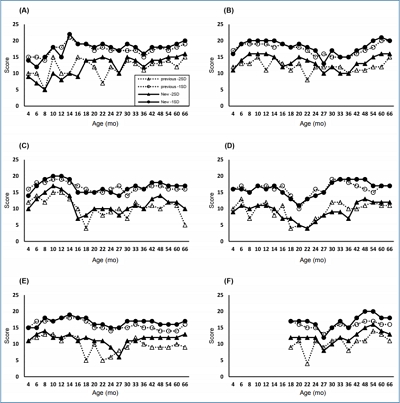
Question: Can the Korean Developmental Screening Test for Infants and Children (K-DST) be a useful screening tool for infants and children in Korea?
Finding: The K-DST has high reliability (internal consistency of 0.73–0.93, test-retest reliability of 0.77–0.88) and a high discriminatory ability with a sensitivity of 0.833 and specificity of 0.979.
Meaning: The K-DST is an effective and reliable screening tool for infants and children with neurodevelopmental disorders in Korea.
- Neonatology (Perinatology)
- Risk-based maternal group B Streptococcus screening strategy is compatible with the implementation of neonatal early-onset sepsis calculator
- Niek B. Achten, J. Wendelien Dorigo-Zetsma, Annemarie M.C. van Rossum, Rianne Oostenbrink, Frans B. Plötz
- Clin Exp Pediatr. 2020;63(10):406-410. Published online April 16, 2020
-
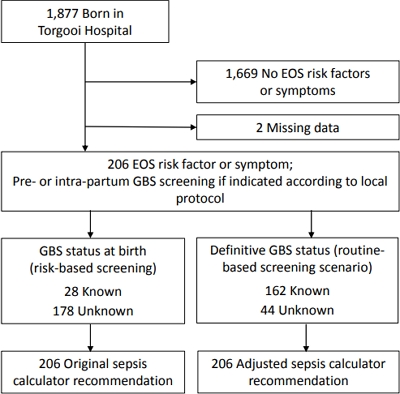
Question: To what extent does risk-based Group B Streptococcus (GBS) screening influence management recommendations by the early-onset sepsis (EOS) calculator?
Finding: In 97% of the newborn infants, the EOS calculator recommendation remained unchanged after the GBS status at birth was updated to the definitive GBS status.
Meaning: Risk-based GBS screening results are compatible with EOS calculator recommendations.
- Review Article
- Cardiology
- Pediatric heart transplantation: how to manage problems affecting long-term outcomes?
- Young Hwue Kim
- Clin Exp Pediatr. 2021;64(2):49-59. Published online April 8, 2020
-
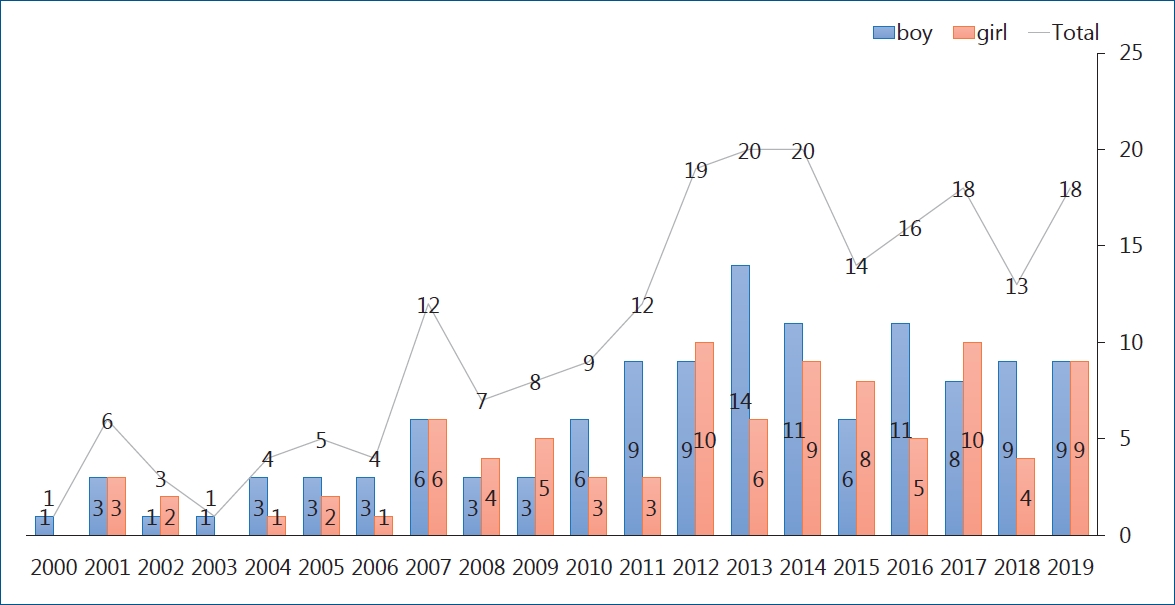
Since the initial International Society of Heart Lung Transplantation registry was published in 1982, the number of pediatric heart transplantations has increased markedly, reaching a steady state of 500–550 transplantation annually and occupying up to 10% of total heart transplantations. Heart transplantation is considered an established therapeutic option for patients with end-stage heart disease. The long-term outcomes of pediatric heart...
- Endocrinology
- Air pollution and childhood obesity
- Moon Young Seo, Shin-Hye Kim, Mi Jung Park
- Clin Exp Pediatr. 2020;63(10):382-388. Published online March 27, 2020
-

Questions: What are the possible effects of air pollution on the occurrence of childhood obesity and what are the mechanisms?
Finding: Epidemiologic studies suggest that air pollutants might act as obesogens in the pediatric population, and their possible mechanisms include oxidative stress, physical inactivity, and epigenetic modulation.
Meaning: This paper reviews updated information on air pollution, one of the modifiable environmental factors in childhood obesity.
- Original Article
- Neurobehavior
- Association between assisted reproductive technology and autism spectrum disorders in Iran: a case-control study
- Ensiyeh Jenabi, Mahdieh Seyedi, Ronak Hamzehei, Saeid Bashirian, Mohammad Rezaei, Katayoon Razjouyan, Salman Khazaei
- Clin Exp Pediatr. 2020;63(9):368-372. Published online March 27, 2020
-

Background: Autism spectrum disorder (ASD) is a neurodevelopmental disorder defined by impairments in social interaction and verbal and nonverbal communication.
Purpose: Determine the association between use of assisted reproduction technology (ART) and the risk of ASD among children. Methods: This case-control study included 300 participants (100 cases, 200 controls). The control group included women with a child aged 2–10 years without ASD,...
- Review Article
- Other
- Comparison of diagnostic and treatment guidelines for undescended testis
- Jaeho Shin, Ga Won Jeon
- Clin Exp Pediatr. 2020;63(11):415-421. Published online March 23, 2020
-
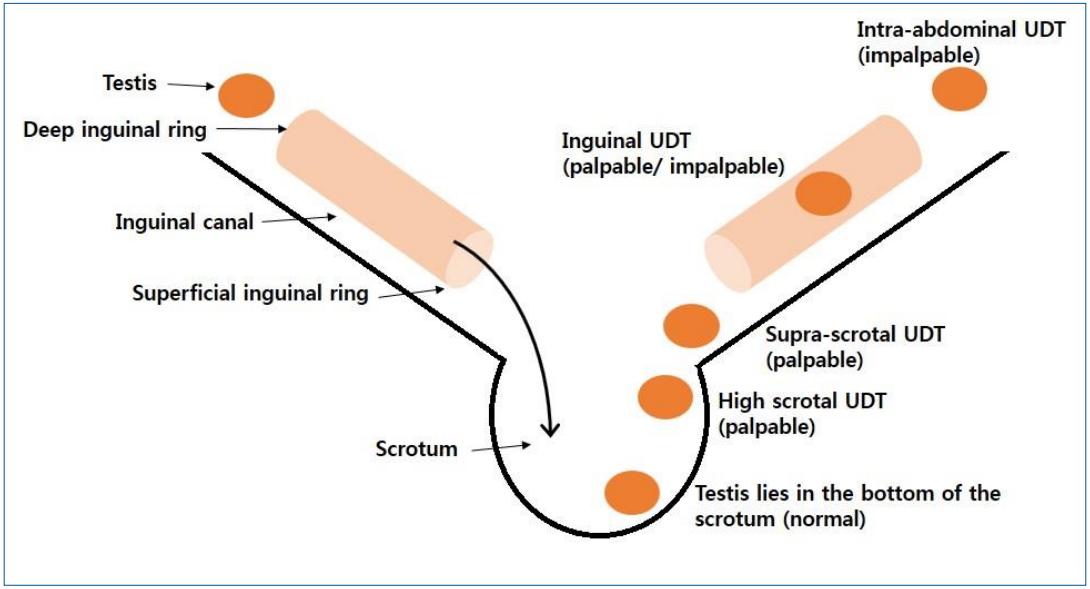
Primary caregivers should consider surgical specialist referral of patients with undescended testis if no descent occurs by 6 months, undescended testis is newly diagnosed after 6 months of age, or testicular torsion is suspected. Orchiopexy is recommended between 6 and 18 months at the latest. The original location of the testes and the age at orchiopexy are predictive factors for infertility and malignancy later in life.
- Original Article
- Endocrinology
- Influence of subclinical hypothyroidism on metabolic parameters in obese children and adolescents
- Ozlem Kara
- Clin Exp Pediatr. 2020;63(3):110-114. Published online March 6, 2020
-

Question: Does subclinical hypothyroidism in obese children and adolescents affect metabolic parameters?
Finding: Insulin, HOMA-IR, and TG levels were higher and the HDL-C level was lower in patients with SH.
Meaning: A clear association is observed between SH, and insulin resistance and dyslipidemia in obese children. It can be said that the TSH may be evaluated as a metabolic risk factor in obese patients.
- Review Article
- Neurology
- Advanced neuroimaging techniques for evaluating pediatric epilepsy
- Yun Jeong Lee
- Clin Exp Pediatr. 2020;63(3):88-95. Published online February 6, 2020
-

Accurate localization of the seizure onset zone is important for better seizure outcomes and preventing deficits following epilepsy surgery. Recent advances in neuroimaging techniques have increased our understanding of the underlying etiology and improved our ability to noninvasively identify the seizure onset zone. Using epilepsy-specific magnetic resonance imaging (MRI) protocols, structural MRI allows better detection of the seizure onset zone,...
- Hematology
- Genetic classification and confirmation of inherited platelet disorders: current status in Korea
- Ye Jee Shim
- Clin Exp Pediatr. 2020;63(3):79-87. Published online February 6, 2020
-

Inherited platelet disorders (IPDs), which manifest as primary hemostasis defects, often underlie abnormal bleeding and a family history of thrombocytopenia, bone marrow failure, hematologic malignancies, undefined mucocutaneous bleeding disorder, or congenital bony defects. Wide heterogeneity in IPD types with regard to the presence or absence of thrombocytopenia, platelet dysfunction, bone marrow failure, and dysmegakaryopoiesis is observed in patients. The individual...
- Original Article
- Neonatology (Perinatology)
- Effect of red blood cell transfusion on short-term outcomes in very low birth weight infants
- Eui Young Lee, Sung Shin Kim, Ga Young Park, Sun Hyang Lee
- Clin Exp Pediatr. 2020;63(2):56-62. Published online February 6, 2020
-
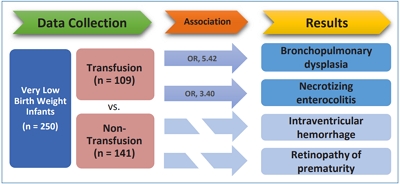
Question: Does RBC transfusion affect the short-term outcomes of VLBW infants?
Finding: The results showed that RBC transfusion was significantly related to the incidence of BPD (OR, 5.42; P<0.001) and NEC (OR, 3.40; P=0.009).
Meaning: Careful consideration of the patient’s clinical condition and appropriate guidelines is required before administering RBC transfusions.
- Systematic review and meta-analysis
- Genetics and Metabolism
- Global prevalence of classic phenylketonuria based on Neonatal Screening Program Data: systematic review and meta-analysis
- Hamid Reza Shoraka, Ali Akbar Haghdoost, Mohammad Reza Baneshi, Zohre Bagherinezhad, Farzaneh Zolala
- Clin Exp Pediatr. 2020;63(2):34-43. Published online February 6, 2020
-
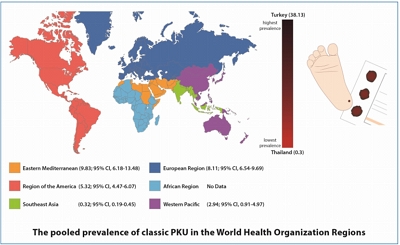
Question: What is the global prevalence of classic phenylketonuria based on Neonatal Screening Program Data?
Finding: The overall worldwide prevalence of the disease is 6.002 per 100,000 neonates. The highest prevalence (38.13) was reported in Turkey, while the lowest (0.3) in Thailand.
Meaning: This difference in the prevalence may be due to differences in the number of consanguineous marriages among the different regions, phenylalanine cutoff points, and sample sizes.
- Review Article
- General Pediatrics
- Association between maternal smoking during pregnancy and risk of bone fractures in offspring: a systematic review and meta-analysis
- Erfan Ayubi, Saeid Safiri, Kamyar Mansori
- Clin Exp Pediatr. 2021;64(3):96-102. Published online February 5, 2020
-

Question: What is the effect of maternal smoking during pregnancy (MSDP) on the risk of bone fractures in the offspring?
Finding: After the adjustment for misclassification, MSDP may be associated with a 27% increased risk of bone fracture in the offspring (pooled odds ratio, 1.27; 95% confidence interval, 1.00–1.62; I2=0%; P=0.537)
Meaning: Preventive measures and health education programs should be designed and implemented to encourage women to stop smoking, especially during.
- Allergy
- Montelukast use over the past 20 years: monitoring of its effects and safety issues
- Yong Ju Lee, Chang-Keun Kim
- Clin Exp Pediatr. 2020;63(10):376-381. Published online February 5, 2020
-

Although the efficacy of montelukast is inferior to that of ICS, both physicians and parents prefer montelukast to ICSs.
EDN may be a useful biomarker for the treatment and monitoring of preschool children with asthma.
The US FDA requires boxed warning about serious neuropsychiatric events of montelukast, therefore, physicians should consider the benefits and risks of montelukast before prescribing it.
- Neonatology (Perinatology)
- Short- and long-term outcomes of very low birth weight infants in Korea: Korean Neonatal Network update in 2019
- Jang Hoon Lee, YoungAh Youn, Yun Sil Chang; Korean Neonatal Network
- Clin Exp Pediatr. 2020;63(8):284-290. Published online February 5, 2020
-

The Korean Neonatal Network (KNN) has collected population-based data for very low birth weight infants (VLBWIs) born in Korea since 2013. The survival rate of all VLBWIs was 86% in Korea. The overall prevalence of cerebral palsy was 6.2%–6.6%. Bilateral blindness and hearing loss were reported in 0.2%–0.3%, 0.8%–1.9%, respectively. The KNN has published annual reports and papers for facilitating the improvement of VLBWIs outcome in Korea.
- Original Article
- General Pediatrics
- Ability of children to perform touchscreen gestures and follow prompting techniques when using mobile apps
- Savita Yadav, Pinaki Chakraborty, Arshia Kaul, Pooja, Bhavya Gupta, Anchal Garg
- Clin Exp Pediatr. 2020;63(6):232-236. Published online February 5, 2020
-

Background: Children today get access to smartphones at an early age. However, their ability to use mobile apps has not yet been studied in detail.
Purpose: This study aimed to assess the ability of children aged 2–8 years to perform touchscreen gestures and follow prompting techniques, i.e., ways apps provide instructions on how to use them. Methods: We developed one mobile app...
- Neonatology (Perinatology)
- Synbiotics use for preventing sepsis and necrotizing enterocolitis in very low birth weight neonates: a randomized controlled trial
- Ozge Serce Pehlevan, Derya Benzer, Tugba Gursoy, Guner Karatekin, Fahri Ovali
- Clin Exp Pediatr. 2020;63(6):226-231. Published online February 5, 2020
-
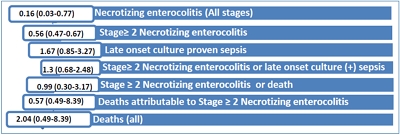
Background: Probiotics and prebiotics have strain-specific effects on the host. Synbiotics, a mixture of probiotics and prebiotics, are proposed to have more beneficial effects on the host than either agent has alone.
Purpose: We performed a randomized controlled trial to investigate the effect of Lactobacillus and Bifidobacterium together with oligosaccharides and lactoferrin on the development of necrotizing enterocolitis (NEC) or sepsis...
- Allergy
- Ten-year trends and prevalence of asthma, allergic rhinitis, and atopic dermatitis among the Korean population, 2008–2017
- Jihyun Ha, Seung Won Lee, Dong Keon Yon
- Clin Exp Pediatr. 2020;63(7):278-283. Published online January 29, 2020
-
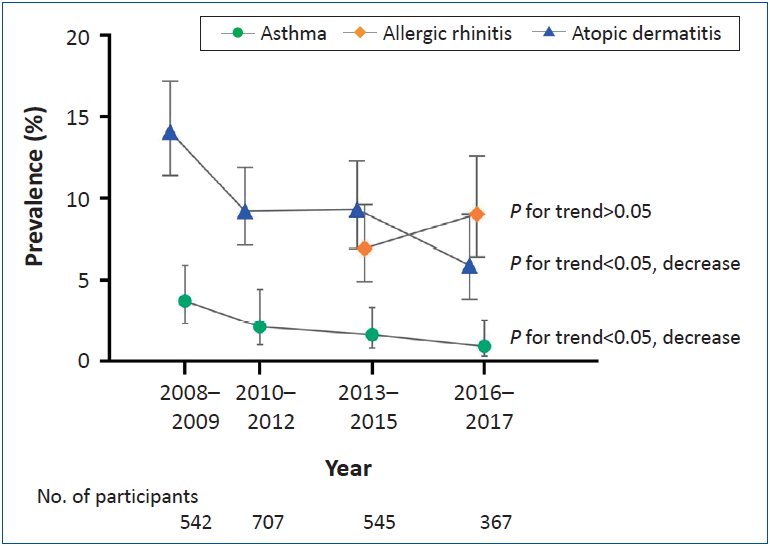
Background: Major questions remain regarding the agestratified trends of allergic diseases and asthma in Korea.
Purpose: To identify the estimated recent prevalence and 10- year trends in asthma, allergic rhinitis, and atopic dermatitis among the Korean population from 2008 to 2017. Methods: This nationwide cross-sectional survey (Korean National Health and Nutrition Examination Survey) over 10 years (2008–2017) examined representative samples of the...
- Review Article
- Gastroenterology
- Increasing incidence of inflammatory bowel disease in children and adolescents: significance of environmental factors
- Sowon Park, Yunkoo Kang, Hong Koh, Seung Kim
- Clin Exp Pediatr. 2020;63(9):337-344. Published online December 6, 2019
-
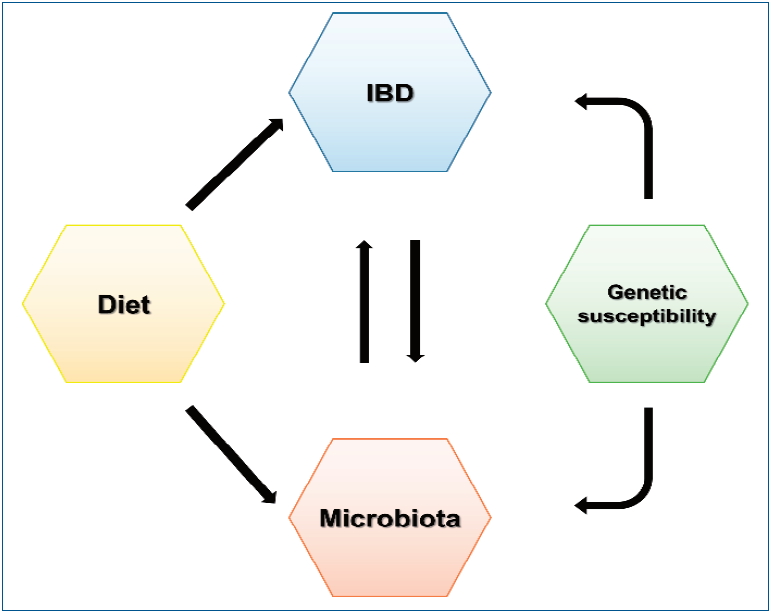
Inflammatory bowel disease (IBD) is a chronic relapsing immune-mediated disease of the intestinal tract. Although its prevalence is reportedly lower in Asia than in Western countries, the rapid increase in the incidence of IBD has drawn attention to its etiology, including genetic susceptibility and environmental factors. Specifically, recent studies concerning dietary treatments and intestinal microbiota suggest that these factors may...
- Original Article
- Immunology
- Immunogenicity and safety of a 12-valent pneumococcal conjugate vaccine in infants aged 6–10 weeks: a randomized double-blind active-controlled trial
- Jonghoon Shin, Jamaree Teeratakulpisarn, Thanyawee Puthanakit, Tuangtip Theerawit, Ji Hwa Ryu, Jinhwan Shin, Seulgi Lee, Hayoung Lee, Kyungjun An, Hun Kim
- Clin Exp Pediatr. 2020;63(7):265-271. Published online December 6, 2019
-
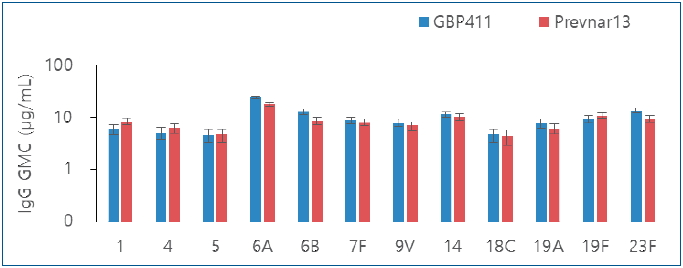
Question: The immunogenicity and safety of GBP411 when administered to healthy infants are not understood.
Finding: The intergroup differences were not significant for all 12 serotypes after the booster dose. The overall incidence of solicited local adverse events between the groups did not differ significantly.
Meaning: GBP411 with a 2p+1 dosing schedule induced a substantial immune response, and may be safe for administration to healthy infants.
- Endocrinology
- Effect of agricultural pesticide on precocious puberty in urban children: an exploratory study
- Junghwan Suh, Han Saem Choi, Ahreum Kwon, Hyun Wook Chae, Ho-Seong Kim
- Clin Exp Pediatr. 2020;63(4):146-150. Published online December 6, 2019
-

Question: Does agricultural pesticide effect precocious puberty in girls?
Finding: Dinotefuran, an insecticide of neonicotinoid class, was detected in one of 30 patients with precocious puberty, and in 2 girls of the normal control group, which was not statistically significant.
Meaning: There was no close relationship between agricultural pesticides and development of precocious puberty.
- Other
- Korean parents’ perceptions of the challenges and needs on school re-entry during or after childhood and adolescent cancer: a multi-institutional survey by Korean Society of Pediatric Hematology and Oncology
- Jun Ah Lee, Jae Min Lee, Hyeon Jin Park, Meerim Park, Byung Kiu Park, Hee Young Ju, Ji Yoon Kim, Sang Kyu Park, Young Ho Lee, Ye Jee Shim, Heung Sik Kim, Kyung Duk Park, Yeon-Jung Lim, Hee Won Chueh, Ji Kyoung Park, Soon Ki Kim, Hyoung Soo Choi, Hyo Seop Ahn, Jeong Ok Hah, Hyoung Jin Kang, Hee Young Shin, Mee Jeong Lee
- Clin Exp Pediatr. 2020;63(4):141-145. Published online November 14, 2019
-

Question: What are the parental needs and challenges when their children return to school after cancer?
Finding: In addition to scholastic aptitude-oriented programs, emotional and psychosocial support is necessary for a successful return to school.
Meaning: Pediatric oncologists should actively engage in improving oncology practices to better integrate individualized school plans and educate peers and teachers to improve health literacy to make them understand the needs of children with cancer.
- Review Article
- Neurology
- Factors associated with seizure and cognitive outcomes after epilepsy surgery for low-grade epilepsy-associated neuroepithelial tumors in children
- Ara Ko, Joon Soo Lee
- Clin Exp Pediatr. 2020;63(5):171-177. Published online November 13, 2019
-

Low-grade epilepsy-associated neuroepithelial tumors (LEATs) are responsible for drug-resistant chronic focal epilepsy, and are the second-most common reason for epilepsy surgery in children. LEATs are extremely responsive to surgical treatment, and therefore epilepsy surgery should be considered as a treatment option for LEATs. However, the optimal time for surgery remains controversial, and surgeries are often delayed. In this review, we...
- Allergy
- Drug Allergy in Children: What Should We Know?
- Ji Soo Park, Dong In Suh
- Clin Exp Pediatr. 2020;63(6):203-210. Published online November 12, 2019
-

The drug allergy “label” may have a lifetime of consequences for a child. Many children with alleged drug allergies are proven to be tolerant to the culprit medication when challenged. The field of drug hypersensitivity is a recently evolving field of research, but studies on its epidemiology and diagnostic tools are lacking in children. Clinical history is significant in the...
- Original Article
- Nutrition
- Positive association of breastfeeding on respiratory syncytial virus infection in hospitalized infants: a multicenter retrospective study
- Min Jeong Jang, Yong Joo Kim, Shinhye Hong, Jaeyoon Na, Jong Hee Hwang, Son Moon Shin, Young Min Ahn
- Clin Exp Pediatr. 2020;63(4):135-140. Published online November 12, 2019
-
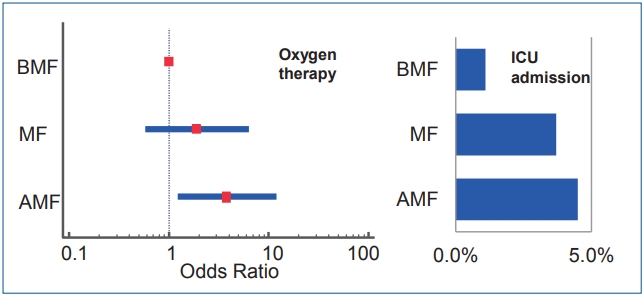
Question: Human milk has stronger antiviral, antibacterial, and anti-inflammatory properties compared with formula milk. How dose breastfeeding affect respiratory syncytial virus infection in Korea?
Finding: Breastfed infants required less oxygen therapy and possible intensive care unit admission than artificial formulafed infants during respiratory syncytial virus infection.
Meaning: This protective role of breast milk on RSV severity can be a supporting evidence for promoting breastfeeding in Korea.
- Cardiology
- Importance of pulmonary valve morphology for pulmonary valve preservation in tetralogy of Fallot surgery: comparison of the echocardiographic parameters
- Su Jin Choi, Jung Eun Kwon, Da Eun Roh, Myung Chul Hyun, Hanna Jung, Young Ok Lee, Joon Yong Cho, Yeo Hyang Kim
- Clin Exp Pediatr. 2020;63(5):189-194. Published online November 8, 2019
-

Question: Is echocardiographic examination is useful for surgical method decision in patients with tetralogy of Fallot (TOF)?
Finding: Various echocardiographic parameters serve as predictors for determining surgical methods for TOF patients. However, the PV morphology and tissue characteristics should also be considered.
Meaning: A full dependence on the size of the pulmonary valve annulus (PVA), the z score, and the ratio of the size of PVA to aortic valve annulus or descending aorta surgery may result in inadequate surgical results during TOF total correction.
- Allergy
- Asthma predictive index as a useful diagnostic tool in preschool children: a cross-sectional study in Korea
- Dong Hyeon Lee, Ji-Won Kwon, Hyung Young Kim, Ju-Hee Seo, Hyo-Bin Kim, So-Yeon Lee, Gwang-Cheon Jang, Dae-Jin Song, Woo Kyung Kim, Young-Ho Jung, Soo-Jong Hong, Jung Yeon Shim
- Clin Exp Pediatr. 2020;63(3):104-109. Published online November 8, 2019
-

Question: Is physician-diagnosed current asthma in preschool children associated with the asthma predictive index, atopic sensitization, or pulmonary function test?
Finding: Physician-diagnosed current asthma in preschool children was associated with the asthma predictive index, but not with spirometry, methacholine provocation test, fractional expiratory nitric oxide level, and atopic sensitization.
Meaning: Physician-diagnosed asthma in preschool children may be different from classic atopic asthma in school children or adolescents.
- Systematic review and meta-analysis
- Neurobehavior
- Association between neonatal jaundice and autism spectrum disorders among children: a meta-analysis
- Ensiyeh Jenabi, Saeid Bashirian, Salman Khazaei
- Clin Exp Pediatr. 2020;63(1):8-13. Published online November 7, 2019
-
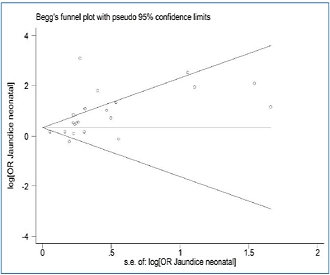
Autism spectrum disorder is a common neurodevelopmental disorder with an unknown etiology. The correlation between neonatal jaundice and the risk of developing autism spectrum disorder was investigated previously. Some studies showed significant associations, whereas others demonstrated no association. In this meta-analysis, we pooled the results of observational studies to examine the association between neonatal jaundice and the risk of autism...
- Review Article
- Neurology
- Genetic tests by next-generation sequencing in children with developmental delay and/or intellectual disability
- Ji Yoon Han, In Goo Lee
- Clin Exp Pediatr. 2020;63(6):195-202. Published online November 4, 2019
-

Developments in next-generation sequencing (NGS) techogies have assisted in clarifying the diagnosis and treatment of developmental delay/intellectual disability (DD/ID) via molecular genetic testing. Advances in DNA sequencing technology have not only allowed the evolution of targeted panels but also, and more currently enabled genome-wide analyses to progress from research era to clinical practice. Broad acceptance of accuracy- guided targeted gene...
- Pulmonology
- High-flow nasal cannula oxygen therapy in children: a clinical review
- Ji-Won Kwon
- Clin Exp Pediatr. 2020;63(1):3-7. Published online October 28, 2019
-

High-flow nasal cannula (HFNC) is a relatively safe and effective noninvasive ventilation method that was recently accepted as a treatment option for acute respiratory support before endotracheal intubation or invasive ventilation. The action mechanism of HFNC includes a decrease in nasopharyngeal resistance, washout of dead space, reduction in inflow of ambient air, and an increase in airway pressure. In preterm...
-

-
-
Impact Factor3.2
-
8.02023CiteScore94th percentilePowered by
-









